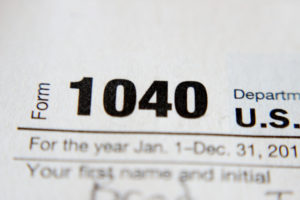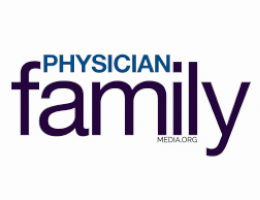Plan Ahead: Tax Tips for Physician Families
By Bruce Roscher

It’s best to be prepared at tax preparation time, so much less stress is created. Tax time can be especially stressful for younger taxpayers who are going through life changes, or earning substantially higher income for the first time.
Young physician families are an excellent example of this type of taxpayer. These families have several tax issues particular to their situation. Let’s review some of these issues.
Young physicians can earn income as an employee, or as an independent contractor. While employees receive a Form W-2 at the end of the year, independent contractors receive a Form 1099. Employees have taxes withheld from their earnings, based on a Form W-4, which the employee completes prior to receiving their first paycheck. Independent contractors do not have taxes withheld from their paycheck. Independent contractors should file a Schedule C as part of their annual Form 1040. They are considered self-employed.

Since taxes for these independent contractors are not withheld, quarterly tax estimates should be made to the Department of the Treasury and to your state agency. In addition, there are two types of taxes that are due with the annual 1040: federal income taxes and self-employment taxes. Self-employment taxes represent the social security and Medicare taxes that are withheld from employee paychecks. Therefore, please be aware how your employer is paying you before you begin work. Moonlighting income is usually an independent contractor arrangement.
There are numerous Internal Revenue Service regulations regarding a person being classified as an independent contractor versus employee status. It would be best to consult with a tax professional regarding these regulations, to be assured that your working relationship is being classified correctly.

Young physician families also have expenses specific to being medical providers. Examples are travel, license fees, dues, subscriptions and exam fees. Work-related expenses incurred by you as an employee should be reported on Form 2106, while independent contractors report these expenses as deductions against the income reported on Schedule C. Form 2106 expenses may be limited as deductions, depending on your entire tax situation.
Calculations of deductible automobile expenses can be tricky. One method is to keep a contemporaneous log of your mileage throughout the year: beginning and ending mileage from your odometer, personal miles, business miles and commuting miles. Remember: commuting miles to and from your principal place of work are not deductible. These mileage figures then create a business use percentage of your vehicle. This percentage is applied to all of your vehicle expenses: gas, repairs, etc.

However, another method may be simpler: multiplying your business miles (compiled in your log) by the standard mileage rate of 56 cents for 2014 (57.5 cents for 2015). This optional method for determining the deductible costs of operating an automobile for business may yield a different figure than the traditional method, so calculating your deduction both ways for comparison purposes may be worthwhile.
I am not only saying this because I am a CPA, but the value of hiring a CPA to prepare your annual tax return could be a wise investment. Your potential tax savings should outweigh the tax preparation fee that is paid.

Bruce Roscher, CPA, CFP®, CMA, CGMA has been managing medical practices and their related companies since 1990. He has been a certified public accountant since 1979, a certified financial planner since 1989, and a certified management accountant since 1993. He recently accepted a position as Chief Financial Officer of Pennmed Member Services Company, which is affiliated with the Pennsylvania Medical Society. Bruce has been married to his wife Lisa, a nurse practitioner, for 35 years. They have three grown daughters: Liz, Angela and Katie. Bruce and Lisa live in Harrisburg, PA and are part of an extended medical family, with two siblings who are physicians.
(Editor’s Note: This blog originally ran in April 2015.)
